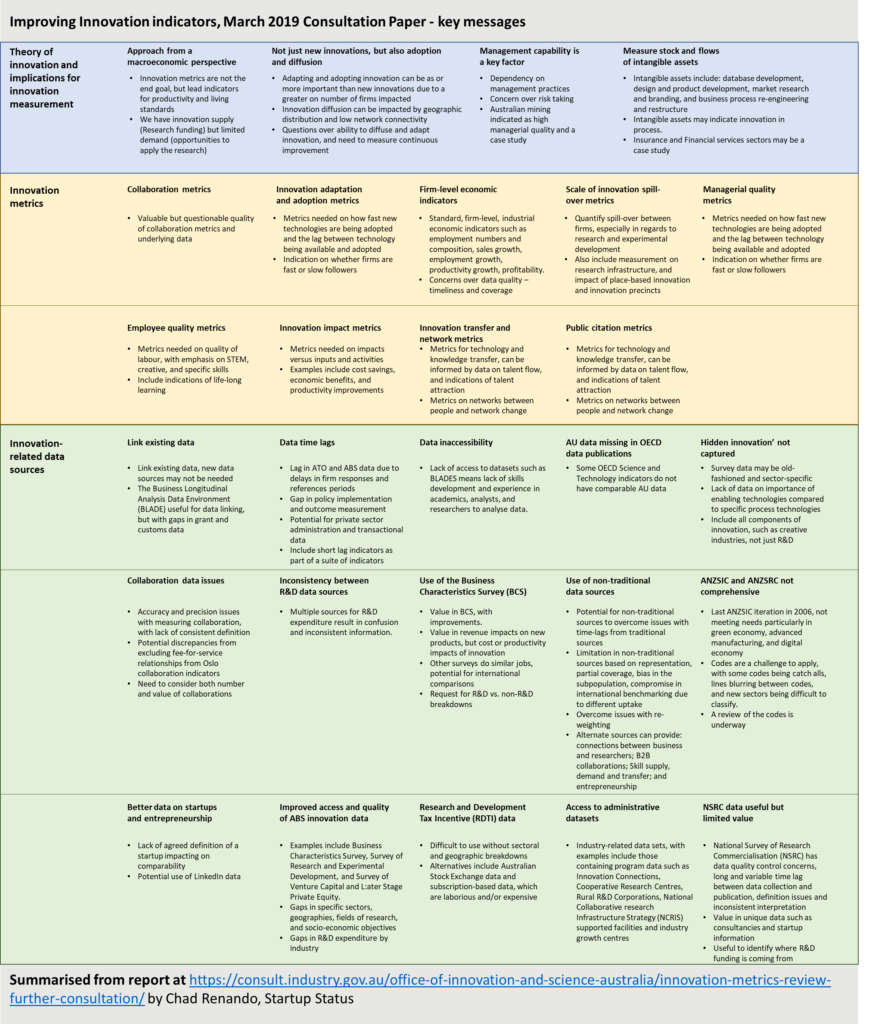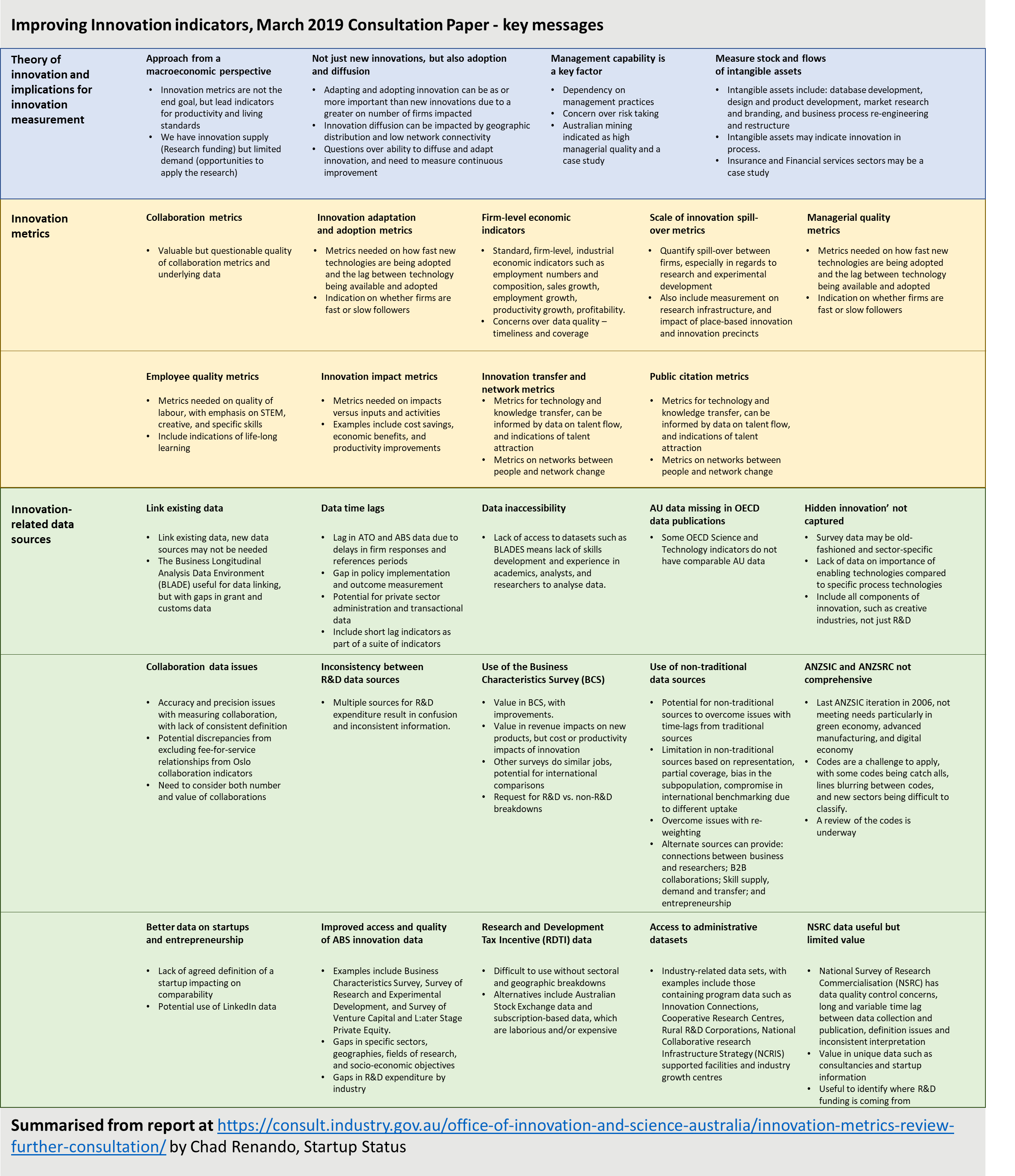Australia’s improving innovation indicators – a brief review
A formal review of Australia’s Innovation Metrics in Australia started in May 2018. A discussion paper was released in March 2019.
The review includes the establishment of committees as well as the involvement of the Australian Academy of Technology and Engineering. The Academy is advising on the conceptual framework, data currently available including gaps, and metrics for inclusion, including new metrics.
A workshop was held on 13 and 14 March 2019, after which the proceedings of the workshop were released.
A brief history of National Innovation System measurement
Innovation is complex and measurement is not an exact science. The concept of National Innovation Systems emerged around the late 1980s and gained structure in the mid- to late-1990s. A 1997 article by the OECD provides a good overview and definition.
Measurement of the overall system became a priority as the national innovation system concept became more understood. Some approaches towards measuring aspects of the system emerged, such as the Global Entrepreneurship Monitor in 1999, but structured approaches for the overall system were limited.
In 2010, the OECD published Measuring Innovation: A New Perspective. The book provides detailed reviews of four areas of system measurement: People, Firms, Investment, and Outcomes. In the same year, Australia commenced a ten-year Australian Innovation System project which had a section dedicated to the “Measurement and analytical framework for the national innovation system.” From 2019, the project resulted in the current Australian Innovation System Monitor, an online interactive tool to analyse national innovation-related information.
The current state of Australia’s innovation system measurement
I share the above overview to provide a sense of the timelines involved. Looking at the global system of innovation, from the time we conceptualised an idea in the late 1980s to when we developed a working and accessible framework to measuring the concept was around 40 years. This involved trial and error, setbacks, competing priorities, alignment with disparate parties, and people making things up that didn’t exist prior.
Innovation systems are complex and developing a simple framework is a challenging but worthwhile task. There is much to consider.
We can take a sample just from the outcomes from the two-day Indicator review workshop back in March. The participants in the workshop identified 65 points across 38 messages in three themes of: Theory of innovation and implications for innovation measurement; Innovation metrics; and Innovation-related data sources.
I summaries these in the graphic below:

Any one of these points is a project in itself, and a national team is working through the outcomes. The next stage of the project will help advance the conversation. There is hope and excitement in terms of innovation metrics in Australia for several reasons.
First, there are diverse and collaborative teams made up of state and global contributors working through the challenge. Second, world-leading technical platforms are in development to provide access to and integrate source innovation data. Third, multiple systems both national and global have emerged to support data collection and analysis. Finally, this is a global challenge and there is a global community involved as nations learn from each other and build on our collective knowledge.
Like many overnight successes 20 years in the making, I feel there is a tipping point coming over the next one to two years in terms of advances in innovation metrics. This will build on successes and failures of past decades.

